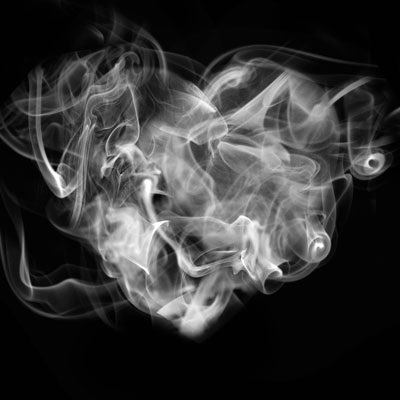All Nonfiction
- Bullying
- Books
- Academic
- Author Interviews
- Celebrity interviews
- College Articles
- College Essays
- Educator of the Year
- Heroes
- Interviews
- Memoir
- Personal Experience
- Sports
- Travel & Culture
All Opinions
- Bullying
- Current Events / Politics
- Discrimination
- Drugs / Alcohol / Smoking
- Entertainment / Celebrities
- Environment
- Love / Relationships
- Movies / Music / TV
- Pop Culture / Trends
- School / College
- Social Issues / Civics
- Spirituality / Religion
- Sports / Hobbies
All Hot Topics
- Bullying
- Community Service
- Environment
- Health
- Letters to the Editor
- Pride & Prejudice
- What Matters
- Back
Summer Guide
- Program Links
- Program Reviews
- Back
College Guide
- College Links
- College Reviews
- College Essays
- College Articles
- Back
Plugging Our Noses to the Ugly Truth
What is inevitable, targets people of all ages, and present everywhere? Death, you say? Surprisingly, the answer to this riddle is second-hand smoking. Second-hand smoking does not receive, and has never received, the bad reputation it deserves. Considering how lethal it is to our health, it is about time we turn back our blind eye to this serious health issue.
Second hand smoking (SHS), also known as environmental tobacco smoke, is smoke from burning tobacco products such as cigarettes, cigars, or pipes. Broadly, secondhand smoke divides into two types: sidestream smoke, which is “smoke from the lighted end” of a tobacco product, and mainstream smoke, which is the smoke that is directly “exhaled by a smoker.” When sidestream or mainstream smoke is inhaled, nonsmokers take in nicotine and toxic chemicals through the same way of smokers, which indicates that through SHS, nonsmokers involuntarily inhale extremely harmful chemicals into their bodies.
From 1964 to 2014, Surgeon General’s Report recorded that 2.5 million out of 20 million smoking related deaths were non smokers who died from inhaling secondhand smoke. Although that 2.5 out of 20 million may seem like a small percentage, the simple fact that secondhand smoking is killing any number of nonsmokers, who did not choose to smoke, is truly horrifying. And since secondhand smoking is present in almost everywhere, anyone could be part of this 12.5% SHS death rate.
Due to the lack of awareness in secondhand smoking, many people underestimate the presence and the effects of it. Even if one does not have a family member who is a smoker, one is not spared from experiencing SHS. Through workplaces, restaurants, streets, bars, casinos, and homes, secondhand smoke is consuming most of our public spaces. Even in enclosed areas, where smokers and nonsmokers are separated by walls, as long as they are in the same building, SHS travels through the vents and affects the nonsmokers. Therefore, those living in multiunit housing, such as apartments and condos, have 45% higher exposure to tobacco smoke than those living in single-family homes.
Although less emphasized and well known than the effects of first hand smoking, second hand smoking causes multiple fatal health problems similar to first hand smoking. For example, SHS has been linked to lung cancer, breast cancer, and immediate damage in the heart, blood vessels, and circulation to adults. According to the American Cancer Society, each year in the United States, second hand smoking causes nearly 7000 lung cancer deaths and 42,000 deaths from heart disease for non smoking adults.
However for infants and children, SHS’s effects are undoubtedly more severe than those of adults due to their underdeveloped body and immune systems. Children may experience ear infections, more frequent and severe asthma attacks, respiratory symptoms such as coughing and sneezing, respiratory infections such as bronchitis and pneumonia, and a higher chance for sudden infant death syndrome (SIDS). Moreover, Alicia Padron of University of Miami Miller School of Medicine in Florida found correlation between ADHD and secondhand smoking. She even stated that children “who were habitually exposed to secondhand smoke for an hour or more each day were close to three times more likely to have a mental disorder.”
In addition, when secondhand smoke is exposed to woman who are pregnant, it “increases the chance of [having] a miscarriage, stillborn birth, low birth-weight baby, and other defects.” Clearly, secondhand smoke does not target specific age groups because it affects both children and adults in many harmful ways.
Therefore, people need to realize that there is no such thing as a risk free level of secondhand smoke exposure.
Now that we know secondhand smoke is present almost everywhere and harmful in many ways, we must seek a solution to solve this injustice of involuntarily experiencing secondhand smoke. However, we cannot completely remove exposure to secondhand smoke unless we ban the use of tobacco, which is very unrealistic.
Hence in order to at least decrease the chances of secondhand smoke, we cannot continue to be ignorant. We cannot continue to avoid SHS by simply opening windows and plugging our noses. We must take solid actions to raise awareness.
For example breast cancer was raised to awareness through breast cancer awareness month, football players wearing pink jerseys, and hosting international charities. Although it would take time, from several years to several decades, we should begin to raise awareness in secondhand smoke similar to breast cancer.
Financially, charities would be run voluntarily, starting with people who are willing to boldly take actions against the pernicious and harmful effects of secondhand smoke. Then hopefully, the community of raising awareness in secondhand smoke will grow like the breast cancer foundations and decrease the chances of exposure to SHS.
Although it is inevitable, targets people of all ages, and present everywhere, we could take actions to raise awareness and drastically lower the chances of inhaling secondhand smoke.

Similar Articles
JOIN THE DISCUSSION
This article has 0 comments.
